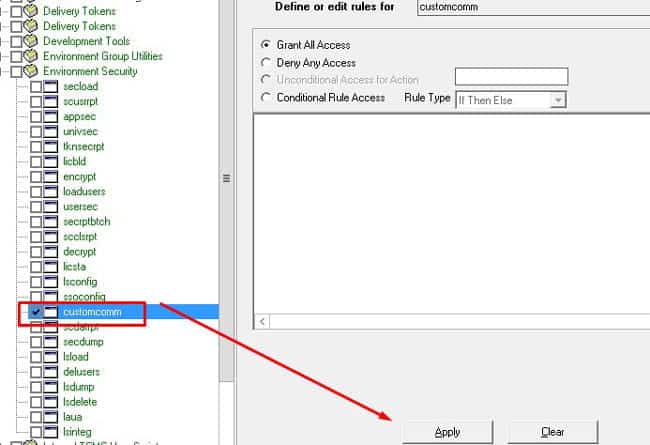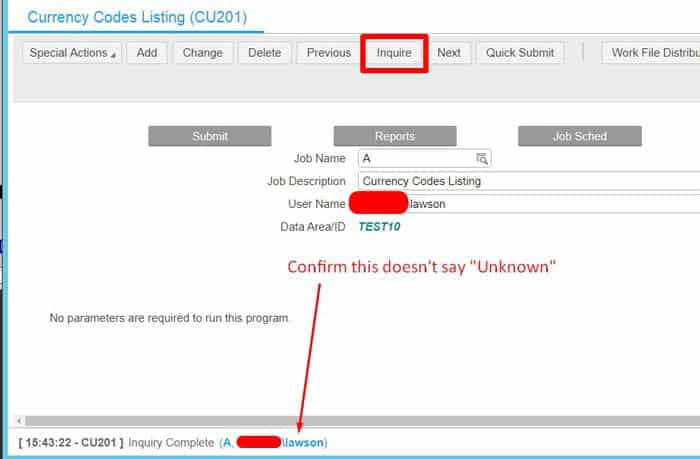This video shares an easy way to set up customers in AR without having to go through and fill in every field or make a bunch of default codes.

This video shares an easy way to set up customers in AR without having to go through and fill in every field or make a bunch of default codes.

Dutch trailer manufacturer Broshuis recently went live with Infor LN and other production solutions from Infor to better respond to the needs of its customers and to support its new strategy. Per the press release, after using Infor VISUAL enterprise resource planning (ERP) for 20 years, Broshuis was looking for new functionalities, including better and integrated production planning, barcode scanning in the warehouse, more standardized automation and tighter logistics control. Infor was chosen because of its extensive industry-specific functionalities for the factory, and the unique capabilities of its middleware solution, Infor ION. Broshuis now uses a slew of the tech company’s products such as Infor LN, Infor CloudSuite Configure Price Quote (CPQ), Infor ION, Infor Ming.le, and Infor Factory Track.


Most, if not all, companies compete on the bases of customer experience. This makes customer service a critical function for any business to perform and grow. To differentiate themselves from others, many businesses integrate systems and services to better customer interaction techniques. Customer Relationship Management (CRM) systems are the perfect integrated system for sales teams to keep track of all customer data. Hannah Wren at shares an article on Business2Community on three reasons that support leaders can benefit from a sales CRM.
1. Fosters a collaboration loop between sales and support
“To create a seamless line of communication between sales and support, high performing support teams are closing gaps between systems and software by integrating a sales CRM. With an integrated sales CRM, support can seamlessly redirect tickets to sales, such as when a hot prospect reaches out with a question that is better-suited for the sales rep they’ve been working with, or notify sales when a conversation with an existing customer leads to a sales opportunity.”
2. Improves CSAT (Customer Satisfaction)
“To deliver on customers’ rising expectations, findings show that high performing support teams are integrating a sales tool to glean additional context about a customer or prospect, such as last communication, pipeline status, company information, time of purchase, number of active deals, or deal size.”
3. Improves agent efficiency
“To close gaps between sales and support, integrating your sales tool with your support tool also allows your agents to work more productively and efficiently. They’ll be able to resolve more tickets faster, reducing first-reply time, improving time to resolution, and streamlining first contact resolution.”
Infor recently announced that Saarioinen, Finland’s leader in the chilled convenience food market, has invested in Infor CloudSuite Food & Beverage. According to Eero Kinnunen, business development director at Saarionen, as long time customers of Infor (20 years), they believe this new contract will help their company create a platform for better processes and faster, more responsive information. The industry-specific suite of Infor applications will help enable Saarioinen standardize, simplify and accelerate product development, improve customer experience and become a more data-driven company. Per the press release, following a thorough review of the market, Saarioinen chose Infor based on the industry-specific functionality of Infor CloudSuite Food & Beverage.
While this error itself may be obvious, you’ve already taken the steps to run the job under a different user with the same parameters and everything seems to be working. Sound familiar? Let’s dive deeper to see if this issue is related to yours.

Choosing a customer relationship management (CRM) program is a very taxing decision as a manager must choose the best one for their business model and employee needs. With so many to choose from these days, how do we know what features are most important that will drive sales up? Dimitri Akhrin shares an article on Forbes of five important features that your next CRM needs to maximize your company’s sales.
Enterprise Resource Planning (ERP) ties together several business processes and allows the flow of information among strategies and features. These days, ERP structures offer even more support in other areas such as commercial enterprise intelligence, income force automation, and advertising automation. Business Matters shares an interesting read about the effectiveness of keeping an ERP system up to date. Effective ERP implementation doesn’t just mean picking the right software program, but also other factors such as documentation, support, training, and vendor communication. Below are Business Matter’s suggestions on how to manage and keep your ERP up to date.
Upgrading Your System
“Software program provider’s paintings to ensure the upgrades to be had for clients on a protection plan will improve ease-of-use if you want to save you time, effort and price, as well as a ramification of latest functions and enhancements that provide actual efficiencies.”
Document business process
“After you’ve decided to pursue ERP, the most essential task is making sure that your commercial enterprise techniques are well-documented and that it’s compiled in one place.”
Data Conversion
“Information conversion is essentially guide and tedious work, and it commonly requires work from practical sources, who’re most acquainted with the character of the records. Small errors can create massive problems, once facts are migrated, so it’s fine to ensure that you have a sturdy technique to high-quality warranty.”
In the last decade, the manufacturing sector has integrated an enterprise resource planning (ERP) system of some sort for smoother operations. However, with modern technology constantly evolving, sometimes the ERP system you implemented just a few years ago is now outdated. Mark Stevens writes an article on the Stamping Journal sharing five signs that your ERP system may be outdated.
Often you will have IPA processes that run Lawson batch jobs, or perform some task with the output from a batch job. There may come a time when you need to programmatically convert the output of those jobs to another format, such as PDF or CSV. The bldxffiles command is a Lawson system command that allows you to do just that. You can use a System Command node in IPA to run the command against batch job output and convert the file. (This even works in cloud, but one caveat to note is that mutli-tenant environments do now allow system command nodes in IPA).
The Command
Command syntax is:
bldxffiles –[ALCPRTX | U] [abcdpstv] <username> <jobname>
| Program Option | Description |
| -A | Generate the ADO files (_ado.xml, .csv and _ado_schema.xml). These are used by the OLE DB server |
| -L | Generate partial CSV files starting from a point in the report. Use in conjunction with the -o option, which indicates the line number to start at. Can also be used in conjunction with the -S option to create a partial CSV file for a single print file.
Example: bldxffiles -L sjohnson CU201JOB1 -o28 The generated CSV file will be CU201_partial.csv |
| -C | Create CSV file |
| -P | Create PDF file |
| -R | Create a print file with left-to-right orientation |
| -T | Include total groups in the CSV |
| -S | Build files only for the path and print file specified. |
| -k | Use the specified separator as the value separator in CSV files:
· a = Tab · b = Space · c = Comma · s = Semicolon |
| -o | Specify the line number to start for a partial CSV file (used in conjunction with option L) |
| UserName | If you are not using the -F option, this is the name of the user who created the print files to be converted.
If you are using the -F option, this is a placeholder only. You must specify some text for this, but it can be any character. |
| JobName | The name of the job whose print files are to be converted. |
| JobStep | The job step whose print files are to be converted. |
| FullFilePath | The path to the input file, if you are using the -S or -Foption. |
| FileName | The name of the input file, if you are using the -S or -F option. |
Using it in IPA
To use the bldxffiles command in IPA, you first need a system command node pointing to the “main” configuration set (or whatever configuration set points to your LSF server).
In the properties of the System Command Node, put your bldxffiles command. Typically you will want to use the “S” option so you can run the command against a filename, rather than being tied down to a specific user and job name (which could change readily). The syntax for converting a prt file to CSV would be similar to:
bldxffiles -SC <NTID> “<filepath>” <filename>
The NTID is for Windows only. On a Unix system, it would be a username.
NOTE: if you are not running the bldxffiles command in the user’s print directory (i.e. you are working on a print file that has been moved to another location), you will need to make sure that you have the print file’s corresponding detail file in the same directory where you are running the command. For instance, if you have a print file named AP520.prt, there is a correspoinding AP520.dtl file in that same print directory. That needs to follow the prt file or your command will return an error.
Example
Here is a command that will convert a check file to CSV format using the Lawson’s NTID. In this case, the file has been moved from the print directory to a new directory, so the .dtl file was also copied over. The .dtl file is also named checkf.dtl.
